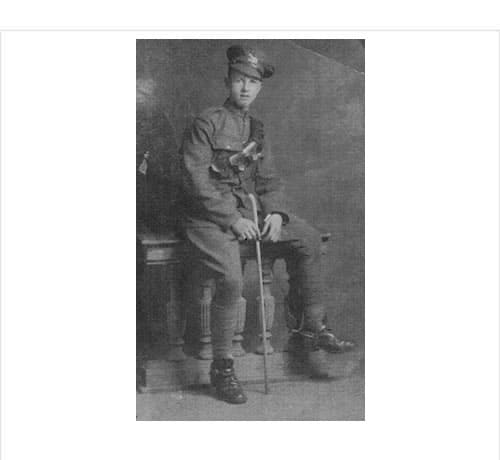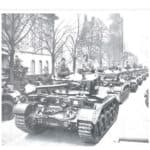Aisne, 1914
The First Battle of the Aisne was the Allied follow-up offensive against the right-wing of the German First Army and the Second Army as they retreated after the First Battle of the Marne earlier in September 1914. The Advance to the Aisne consisted of the Battle of the Marne and the Battle of the Aisne.
The Honour is borne on the Guidon of the 3rd Hussars.
Detail
The 3rd Hussars had been scattered during the advance to the Marne, and their strength was down to 220 in all ranks. With this small number, plus one troop that rejoined on the 12th, they were to gain their fifth battle honour of the war, on the Aisne.
The Marne and the Aisne were separated only in distance, not in time, for the Allies never relaxed their pursuit of the Germans.
However, on the Aisne the Germans turned and stood, in prepared positions of great strength to the north of the river; and their stubborn resistance marked the beginning of four wretched years of trench deadlock.
When dawn came on the 13th, the British held a front of fifteen miles along the Aisne, between Villers on the east and Soissons on the west. Before them lay a broad river, with all its bridges destroyed and covered by the powerful guns of the Germans, entrenched on the heights beyond.
The British task seemed impossible; yet during the day, under heavy fire, the Royal Engineers built or restored fourteen bridges; and by nightfall, the leading infantry were digging in on the north bank, under the noses of the Germans.
The casualties were heavy: when the passage of Aisne was completed five days later, the British had lost 10,000 officers and men killed and wounded; and the Germans also wasted thousands of lives in successive attempts to dislodge the Allies from their trenches.
The regiment crossed the river early on the 14th, and for most of the next three days, they were in action, dismounted, upon the wide Paissy plateau, filling in gaps in the firing line and supporting hard-pressed British and French infantry. They lost only three men killed, and one officer and eight men wounded, before withdrawing south of the river to Vauxere.
Thereafter, they were mainly employed as a mobile reserve.
The battle of Aisne had been fought to a standstill, and the armies settled behind their entanglements of trenches and barbed wire to the dismal routine of siege warfare.
This led directly to the ‘race to the sea’ with both sides trying to outflank the other and the Germans having their eyes set on the Channel Ports.



